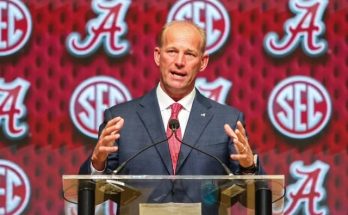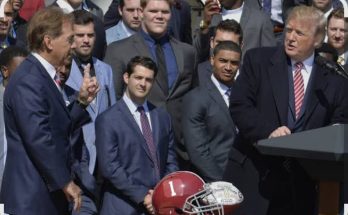Cooper Flagg didn’t just electrify Cameron Indoor Stadium during his time at Duke—he capitalized on the changing landscape of college sports and became one of the most financially successful student-athletes in the nation. At a time when the NCAA’s Name, Image, and Likeness (NIL) rules have opened new floodgates of opportunity, Flagg set a standard for what is possible, both on and off the court. And he did it all while staying true to the traditions of a blue blood program with sky-high expectations.
Flagg entered Durham as the most hyped freshman in the country and the consensus No. 1 overall prospect. The 6-foot-9 phenom from Maine had already drawn comparisons to NBA greats before even putting on a Duke jersey. Expectations were astronomical, and somehow, he lived up to every bit of the billing. But while his on-court dominance was expected, what caught many by surprise was just how business-savvy Flagg and his camp proved to be once the NIL window opened wide.
While some top athletes chase dollars over development or heritage, Flagg’s approach was markedly different. He reportedly turned down a $7.5 million NIL offer to transfer from Duke to another school, a move that sent shockwaves through college basketball. In an era where loyalty can seem like a lost art, Flagg chose to double down on Duke, opting to build his legacy in Durham instead of chasing a bigger check elsewhere. Ironically, that decision ended up making him even more marketable. Brands, fans, and investors took note—not just of his athleticism, but his maturity, humility, and loyalty.
By the end of his freshman season, Flagg had inked endorsement deals with some of the biggest names in sports marketing. He signed with Nike early in his college career, maintaining Duke’s longstanding connection with the sportswear giant. The deal, reportedly worth over $1.2 million annually, included performance bonuses tied to his stats and team achievements. With Duke reaching the Final Four in Flagg’s lone season on campus, he cashed in on every level—literally and figuratively.
But Flagg didn’t stop at shoes and sportswear. He branched out into lifestyle brands, tech startups, and even partnered with a major streaming platform for a documentary series chronicling his rise from a small-town Maine prodigy to college basketball’s brightest star. According to sources close to the Duke program, Flagg’s total NIL earnings for the year surpassed $4 million, making him one of the top-earning college athletes in the country. And unlike many of his peers, Flagg didn’t achieve those numbers by chasing every deal thrown his way. He and his advisors were selective, choosing partnerships that aligned with his values and long-term vision.
In interviews, Flagg often spoke about the importance of being a role model and setting a new tone for the NIL era. “This isn’t just about money,” he once said. “It’s about building something that lasts, something I can be proud of 10, 20 years from now.” That mindset made him particularly appealing to sponsors. While other athletes might flash the cash on social media or take flashy, short-term endorsements, Flagg curated a clean, focused image—equal parts killer on the court and polished ambassador off it.
Flagg also made an effort to give back. He donated a portion of his NIL earnings to youth basketball programs in Maine, helping improve facilities and provide gear for underprivileged players. He also set up a scholarship fund for student-athletes who want to pursue college degrees while playing at a high level. These initiatives weren’t part of a PR play—they were a reflection of Flagg’s grounded upbringing and commitment to using his platform for good.
At Duke, the impact was seismic. Flagg brought new energy to an already iconic program. Ticket sales surged. Merchandise with his name and likeness sold out almost instantly. Cameron Indoor became a must-see destination for celebrities, NBA scouts, and influencers alike. Flagg jerseys became one of the highest-selling items in college basketball. Even Duke’s social media engagement skyrocketed during his time there. According to analytics platforms, posts featuring Flagg outperformed every other athlete across multiple sports at Duke, generating millions of dollars in earned media value.
Beyond the numbers, Flagg’s presence had an undeniable influence on recruiting. Top-tier high school players looked at Duke and saw more than just a path to the NBA—they saw a program that could help them thrive in the NIL space while still competing for national titles. Flagg didn’t just cash in; he opened doors for future Blue Devils, helping create a sustainable model for NIL success within a storied college program.
As the season progressed, Flagg’s dominance on the court only amplified his financial appeal. He averaged 19.3 points, 8.6 rebounds, and 3.1 assists per game, and was named a consensus All-American as a freshman. His late-season heroics, including a 30-point performance in the Elite Eight, solidified his status as a future top-three NBA draft pick. By the time Duke’s season ended with a hard-fought loss in the national championship game, Flagg had already etched his name into the school’s rich basketball history.
The conversations about Flagg have already moved to the next level—how will he fare in the NBA, and can his brand sustain its meteoric rise once he leaves college? If the past year is any indication, the answer is a resounding yes. Flagg enters the professional ranks not just as an elite athlete, but as a polished business entity, one with a head start on most of his peers.
Industry experts point to Flagg as the blueprint for future athletes navigating the NIL world. He didn’t take shortcuts. He didn’t follow the money blindly. He stayed the course at Duke, trusted the process, and bet on himself. That bet paid off in a big way—not just in dollar signs, but in legacy points. He showed that NIL and tradition don’t have to be mutually exclusive, that you can honor the jersey while also building your brand.
For Duke, Flagg’s time in Durham will be remembered as a landmark era. He brought excitement, leadership, and excellence in equal measure. His ability to seamlessly merge the old-school values of Duke basketball with the new-school opportunities of NIL made him a transformative figure. And while his time on campus was short, his impact will be felt for years to come.
As the dust settles on Flagg’s college career, one thing is clear: he wasn’t just a generational talent—he was a generational force. He didn’t just make headlines; he made history. And he did it all while making serious bank, the right way, at the right place, in the right moment.
Some may say Cooper Flagg was born for the spotlight. But what he’s proven is that he was prepared for the business of greatness, too. In a landscape where many athletes are still trying to figure out how to balance performance with profit, Flagg mastered it in year one. He turned the pressure into profit and the legacy into leverage. The result? A year at Duke that will be remembered not just for the wins and highlights, but for the financial blueprint it left behind.
Cooper Flagg didn’t just cash in at Cameron—he rewrote the playbook.



